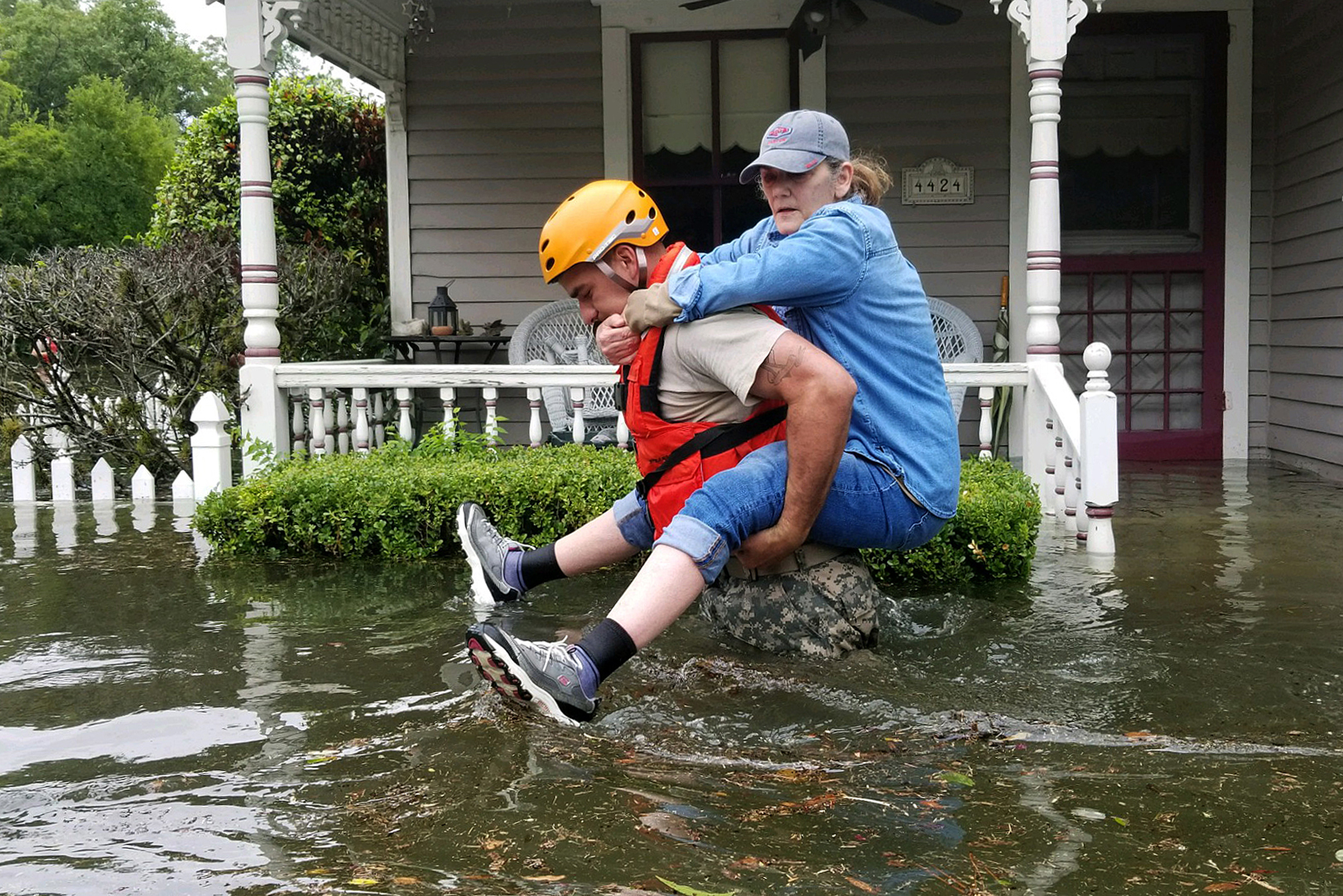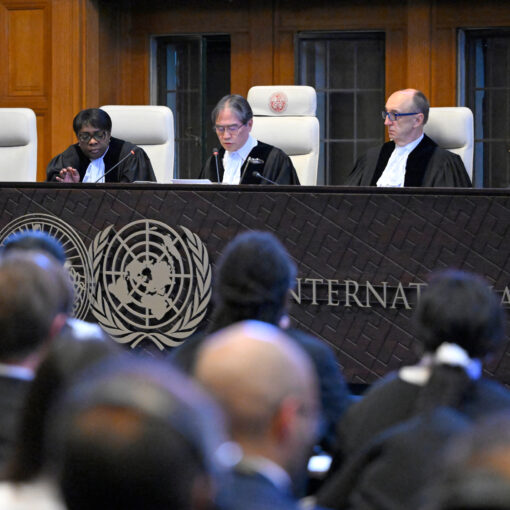A Missed Opportunity or the First of Many Decisions to Come?
The recent rulings on climate change by the European Court of Human Rights (ECtHR) are—as others have pointed out in this blog symposium—both “historic and unprecedented” for various reasons, not least regarding the question of reparation for climate change-related harm. While redress is a pivotal question to think through in relation to climate change, it has, somewhat surprisingly, received less attention from scholars and has not yet been directly addressed by international courts and tribunals. In this regard, Verein KlimaSeniorinnen Schweiz and Others v. Switzerland might be considered a missed opportunity on the part of the ECtHR.
KlimaSeniorinnen was one of three cases concerning climate change before the ECtHR and the only one that reached a decision on its merits. Complaints in the two other cases–Duarte Agostinho and Others v. Portugal and 32 Other States and Carême v. France—were declared inadmissible.
The applicants in KlimaSeniorinnen, four elderly women and an association established “to promote and implement effective climate protection on behalf of its members”, relied on article 2 (right to life), article 6 (right to access to court), article 8 (right to private and family life) and article 13 (right to an effective remedy) of the European Convention on Human Rights (ECHR). The applicants claimed that the increase in heat waves associated with climate change caused a health risk for elderly women, including the individual applicants, in view of their age. They further alleged that Swiss authorities had failed to take appropriate climate change mitigation measures and thus violated various articles of the ECHR. The court agreed, finding violations of Articles 6 and 8 of the ECHR. The Grand Chamber then went on to consider Articles 41 and 46, and thus touched upon, albeit not comprehensively, the issue of reparation under Article 41 of the ECHR specifically.
In KlimaSeniorinnen, the ECtHR could have addressed the links between human rights violations caused by climate change and potential remedies. Such a discussion would have been especially valuable given that other international or regional courts and tribunals have yet to pronounce upon the topic. The issue may be addressed in the advisory opinions that will soon be rendered by the International Tribunal for the Law of the Sea, the Inter-American Court of Human Rights, and the International Court of Justice. Those opinions will naturally be circumscribed by the respective areas of jurisdiction of these courts and tribunals. Yet, it is the ruling of the ECtHR, delivered in the context of a dispute brought by individuals and a legal person, that had the greatest potential to develop the law in respect of reparations for climate change.
Reparations within the Framework of the ECtHR: Fit for (Climate Change) Purpose?
Discussing rights under the ECHR necessarily requires reflecting on the available remedies in case of violations of those rights. The analysis must start with a determination of whether it is possible to award just satisfaction under Article 41 of the ECHR. The jurisprudence of the ECtHR on reparations is abundant, and much has been written on the question of remedies before the Court (see e.g. Ichim, Abdelgawad, or Fikfak).
The Court held that the individual applicants’ complaints were inadmissible and the KlimaSeniorinnen association did not claim damages under Article 41 of the Convention (para. 647). Considering the Court’s consistent jurisprudence, it unsurprisingly decided to make “no award under this head” (ibid). As such, the ECtHR did not have to address the topic of climate change-related reparations, nor explain, for example, what reparations are owed under the umbrella of lack or insufficient mitigation or adaptation measures, or the relationship between claims for compensation under the ECHR and other regimes (e.g. loss and damage). These topics are critical to understanding whether the ECHR regime is capable of adequately addressing reparations for loss and damage related to climate change.
Notably, the ECtHR did address a different set of legal consequences under Article 46 ECHR, which grants the Court the competence to order general (and individual) measures to assist States in fulfilling their obligations to “abide by the final judgment of the Court in any case to which they are parties”. These measures are prospective and cannot be qualified as reparation as such. When such measures are taken by States, they tend to mitigate the risk of future human rights infringements, in this case those related to climate change. However, mindful of the separation of powers and principle of subsidiarity, the ECtHR took a cautious stance in its holding on Article 46.
In its Observations on the facts, admissibility and the merits (Observations), KlimaSeniorinnen submitted “considerations [that] should guide the Court in devising the general measures (Art. 46 ECHR) to be taken by the Respondent” (Observations, para. 187), and submitted the following requests to order general measures under Article 46 ECHR:
“(5) to order the Respondent to adopt the necessary legislative and administrative framework to do its share to prevent a global temperature increase of more than 1.5°C above pre-industrial levels,
(6) to specify what this entails, namely:
- ensuring a [greenhouse gas (GHG)] emission level in 2030 that is net-negative as compared to the emissions in 1990;
- reducing domestic emissions by 61% below 1990 levels by 2030, and to net-zero by 2050, as the domestic component of a.;
- preventing and reducing any emissions occurring abroad that are attributable to the Respondent, in line with the 1.5°C above pre-industrial levels limit;
- permanently removing GHG emissions from the atmosphere and storing them in safe, ecologically and socially sound GHG sinks, if, despite a., b., c., any GHG emissions continue to occur within the control of the Respondent, or the concentration of GHG in the atmosphere is exceeding the level corresponding to the 1.5ºC above pre-industrial levels limit;
(7) to set a binding time-limit for the Respondent to implement such a framework which is adequate in view of (5 and 6) above.” (Observations, Section 3)
Notwithstanding the above, the Court found that KlimaSeniorinnen did not specify general measures per se, but rather sought an order that Switzerland take all suitable measures to achieve certain climate change policy objectives. The Court held in this regard that:
“[t]he applicants submitted that in the event of a finding of a violation by the Court, Article 46 [ECHR] should also be applied. However, given that the choice of means to implement the Court’s judgment was primarily for the respondent State, the Court should not specify the measures to be taken. It should rather indicate that the State would need to take all suitable measures to allow it to achieve a level of annual emissions compatible with its target of attaining a minimum reduction of 40% in GHG emissions by 2030, and carbon neutrality by 2050” (para. 653).
As is common with cases involving environmental issues, the Court refused to order any “specific general measures”. It relied on its previous jurisprudence to point out the declaratory nature of its judgments and that “it is primarily for the State concerned to choose, subject to supervision by the Committee of Ministers, the means to be used in its domestic legal order in order to discharge its obligation under Article 46 [ECHR], provided that such means are compatible with the conclusions and spirit of the Court’s judgment” (para. 656).
Nonetheless, the Court highlighted that States have a “positive obligation” to prevent serious and irreversible adverse effects on human rights, notably the right to private and family life under Article 8 of the ECHR (paras. 440, 538 and 544-554). Accordingly, States do not have carte blanche when it comes to identifying the appropriate measures to mitigate and adapt to climate change. In this regard, the Court drew a fundamental distinction between “the scope of the margin [of appreciation] as regards, on the one hand, the State’s commitment to the necessity of combating climate change and its adverse effect, and the setting of the requisite aims and objectives in this respect, and, on the other hand, the choice of means designed to achieve those objectives” (para. 543). While the former aspect calls for a “reduced margin of appreciation for the States”, the latter justifies “a wide margin of appreciation” (para. 543). In particular, the Court emphatically stated that it would examine whether domestic authorities have taken into account the need to:
“(a) adopt general measures specifying a target timeline for achieving carbon neutrality and the overall remaining carbon budget for the same time frame, or another equivalent method of quantification of future GHG emissions, in line with the overarching goal for national and/or global climate-change mitigation commitments;
(b) set out intermediate GHG emissions reduction targets and pathways (by sector or other relevant methodologies) that are deemed capable, in principle, of meeting the overall national GHG reduction goals within the relevant time frames undertaken in national policies;
(c) provide evidence showing whether they have duly complied, or are in the process of complying, with the relevant GHG reduction targets (see sub-paragraphs (a)-(b) above);
(d) keep the relevant GHG reduction targets updated with due diligence, and based on the best available evidence; and
(e) act in good time and in an appropriate and consistent manner when devising and implementing the relevant legislation and measures.” (para. 550)
Furthermore, specifically with respect to Switzerland, the Court noted the “critical lacunae” in its domestic regulatory framework, “including a failure … to quantify, through a carbon budget or otherwise, national GHG emissions limitations” (para. 573); and noted that, as recognized by the relevant authorities, the State had previously failed to meet its past GHG emission reduction targets (see paras. 558-559).
Thus, while the Court did not order specific measures to be implemented pursuant to Article 46, its conclusions on the merits are quite prescriptive in relation to the actions that it considers Switzerland ought to take pursuant to Article 46(1) to comply with Article 8 of the ECHR. In particular, Switzerland could remedy its violation by (i) quantifying its national GHG emissions limitations through a carbon budget, and (ii) undertaking “measures for the substantial and progressive reduction of [its] GHG emission levels, with a view to reaching net neutrality within, in principle, the next three decades” (paras. 548 and 573).
Conclusion
In KlimaSeniorinnen, the ECtHR effectively held that Member States to the Convention must adopt and apply regulations and measures capable of mitigating the existing and potentially irreversible, future effects of climate change. That is, ECHR Member States must adopt targets and timelines as a part of the domestic regulatory framework with a view to reaching net neutrality, in principle within the next three decades.
The Court’s decision was both prescriptive and deferential. On the one hand, it identified specific failures by Switzerland (e.g., the failure to adopt legislation and determine a carbon budget). On the other hand, the Court afforded Switzerland a margin of appreciation in the selection of individual measures taken to comply with Article 8 (subject to supervision by the Committee of Ministers). While the ECtHR continues “to treat remedies as an afterthought”, it provided the applicants (and others) guidance on how to continue exerting pressure on the Swiss government at the domestic level.
This decision will undoubtedly lead to more litigation before the Court. It will also influence cases pending before domestic courts in Europe that rely on the ECHR, and perhaps also elsewhere. Thus, while it was a missed opportunity on the part of the Court to address the topic of remedies related to climate change, it may also be the first of many decisions to come.











